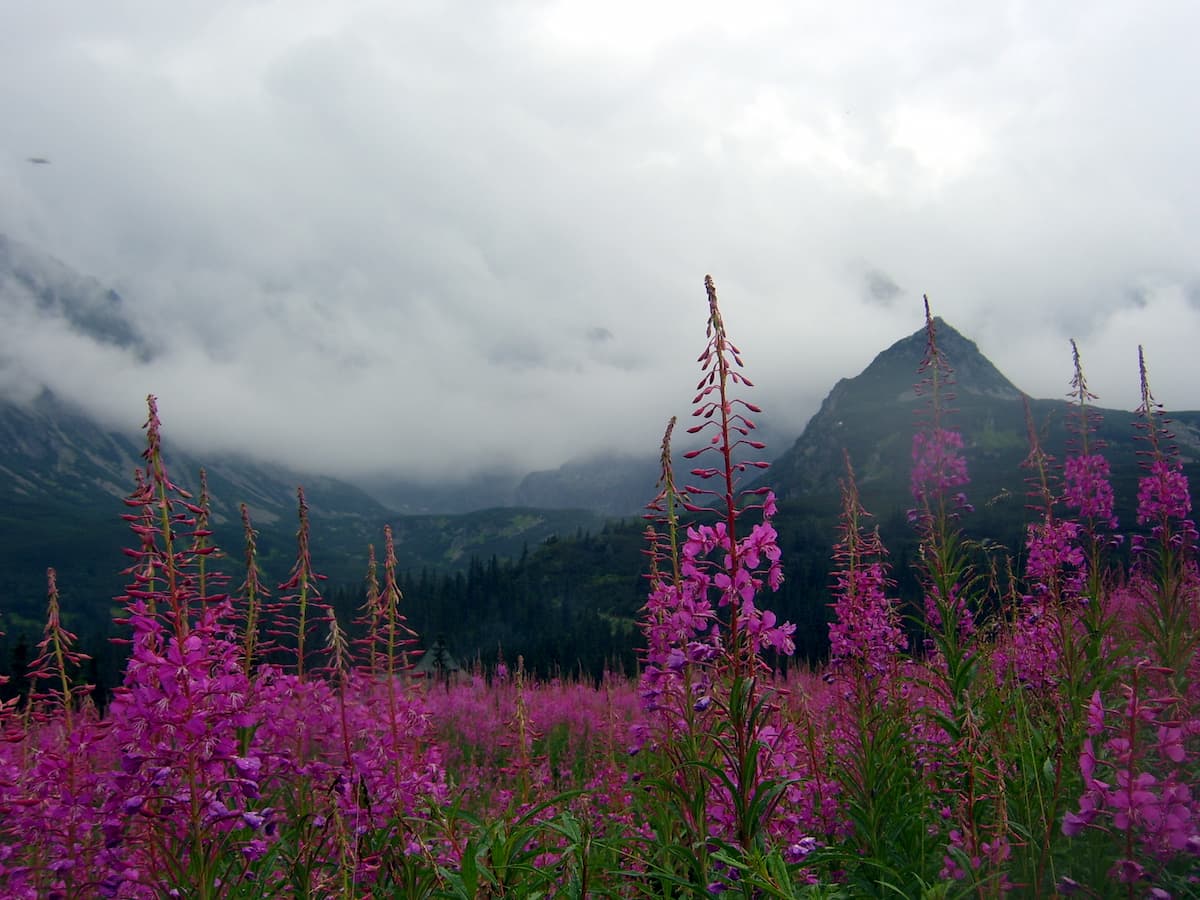Fireweed, a member of the willow plant family, is distinguished by its gorgeous magenta flowers. Its common name comes from its sudden appearance after a wildfire. It may be a colourful addition to sunny, damp areas. It grows fast by rhizomes and requires little upkeep once established. It cannot, however, withstand competition; if other species are allowed to grow in and over it, fireweed will shortly succumb.
Fireweed plant is a widely used species both as a nectar source for pollinators. Primarily long-tongued bees visit the flowers for pollen and nectar, including bumblebees and leafcutting bees. It is also a good food and nectar source for butterflies and moths.
Quick Growing Guide
Botanical Name: Chamaenerion angustifolium
Also Called: Willowherb, Rosebay willowherb (UK), Bombweed (UK)
En français: Épilobe à feuilles étroites
Colour:
Blooms:
Sun / Shade:
Height:
Width:
Pollinators:
Care:
What is Fireweed?
Long spikes of pinkish-purple flowers are the distinctive characteristic of Fireweed, a perennial of the evening-primrose family. It is a tall, showy wildflower that grows between sea level and the subalpine region. There are numerous places where fireweed plants thrive in open meadows along streams, roadsides, and forest edges. It can cover entire fields with its gorgeous pink flowers in places where it is abundant.

Credit: Tamerlan at Polish Wikipedia, Public domain, via Wikimedia Commons
Where does Fireweed grow?
Fireweed plants exist in the northernmost states and provinces of Canada and the United States, from Labrador to Alaska. Throughout North Carolina and California, as well as down the Cordilleran range into New Mexico and California, it is found along the eastern mountain chain in America.
Fireweed grows in well-drained, wet soil, and thrives when fertiliser is applied. They grow and flourish best in full sun, although they can take a little shade as well. Fireweed seeds perform best when treated with cold/moist for four weeks before planting or when grown outdoors straight in the spring. Seeds should not be covered and should instead be carefully driven into the soil. Seeds must be kept wet for 13 to 22 days after cold stratification before germination may occur.
Is it a Weed?
This species is especially abundant in coniferous and mixed forest ecosystems where the ground has recently been disturbed, and it can also be found along roadsides and waste areas in acidic soils. They grow in areas where wildfires have recently occurred.
Toxicity to Animals
Fireweed can be poisonous to sheep and goats if significant amounts are ingested over a long period of time. Over a period of seasons or years, it might damage their livers. It follows that it is not recommended to graze cattle or sheep in fireweed pastures.
It is an introduced plant renowned for aggressively competing with pasture species and being hazardous to other animals, including sheep and goats. Cattle may become unwell, develop slowly, and have poor conditioning as a result of consuming the plant.
Is firewood edible? What does Fireweed taste like?
Most of the plant body of the fireweed plant is edible. Raw leaves are suitable for salads and stir-fries and sautéed with other greens to create a stir-fry dish. In addition to being a beautiful garnish, the flowers and buds can also be used to make fireweed jelly. In addition to being bright pink, the jelly glows in the sunlight and tastes like blackberries, raspberries, or crowberries.







Leave a Reply
You must be logged in to post a comment.